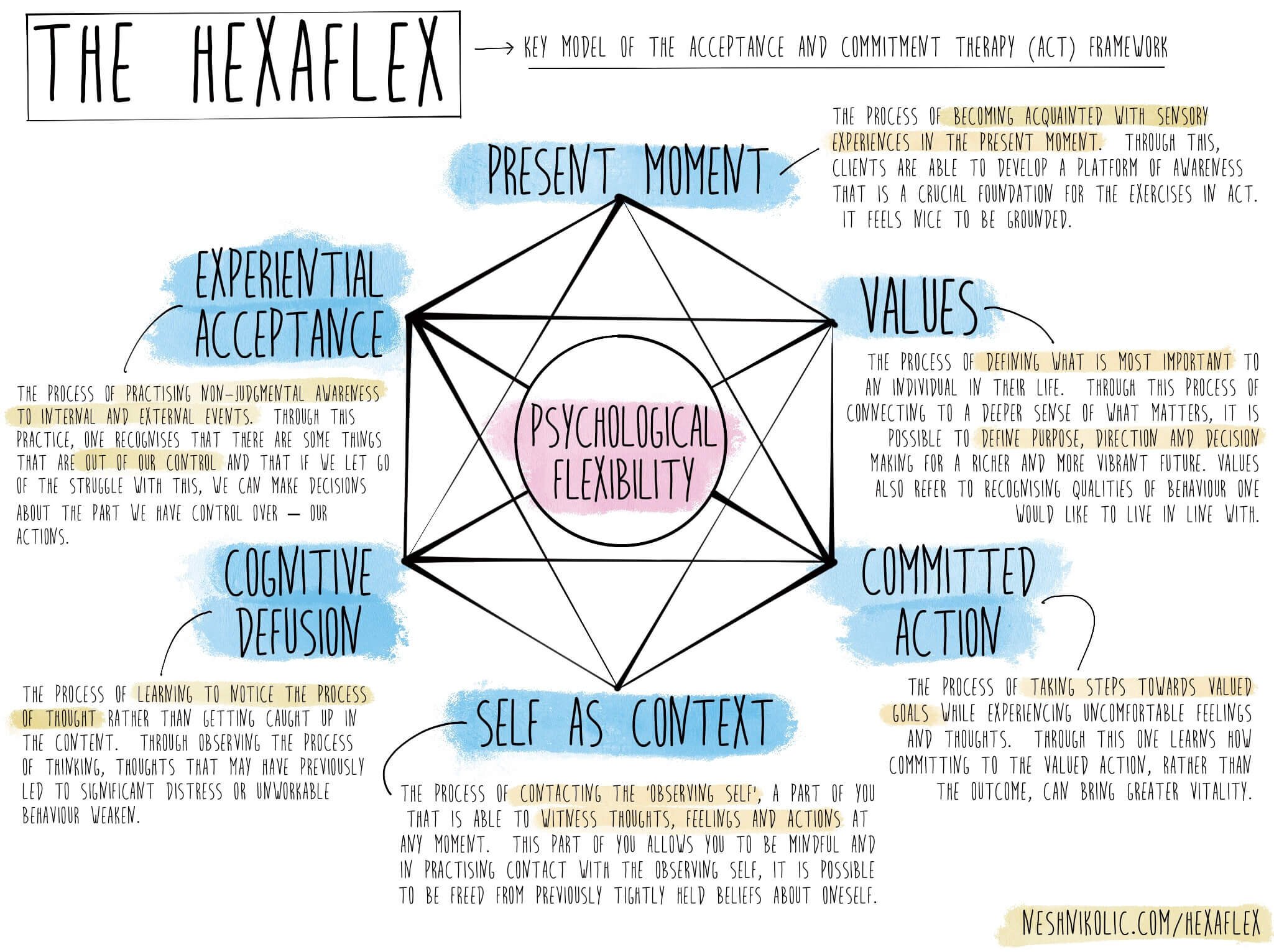6 Acceptance and Commitment Therapy Processes to Help You Stick to Your New Year’s Resolutions
Proper Resolutions Help Us Live Better
Let’s talk about crafting better New Year’s resolutions and actually sticking to them!
Here we go!
The Same Old Story
Tell me if this story sounds familiar. You are sitting around the living room with friends and family as the year is coming to an end. Someone begins talking about their New Year’s resolution. One thing leads to another and you find yourself setting a resolution for the upcoming year. Only to forget about it or fall off track a month or two into said new year.
New Year’s resolutions fail at a pretty high rate. Even those who set them with the best intentions and planning. A 2019 survey found that only 7% of people stick to their New Year’s resolutions. In that same survey, 57% of people chose to not even make a resolution. That is very saddening to see as a therapist. We can live better than that!
We come up short or give up on our resolutions a lot of the time because we fall into the trap of trying to rely on willpower. One of the most common resolutions is to exercise more. It is much easier to stick with a regular exercise routine when our motivation is high right in the beginning. But, like the survey says, only about 7% of people will actually stick to that exercise routine until it becomes an ingrained behavior that is part of their regular routine.
Relying on willpower alone is a sure fire set up for failing. We can do better, but how? Let’s look at New Year’s resolutions from the perspective of Acceptance and Commitment Therapy (ACT).
Acceptance and Commitment Therapy
Above is the ACT hexaflex. This describes the 6 core processes of ACT.
Acceptance and Commitment Therapy can give us a better chance at fulfilling our resolutions for the upcoming year.
To create an ACT style New Year’s Resolution we must begin with understanding personal values. I would suggest completing an online values card sort exercise. I found one for you here: https://www.think2perform.com/our-approach/values/new. At any moment you should be able to ask and answer this question: What is the value I am working towards right now? Go back and revisit your top 5 values if you can’t answer that with confidence.
Once you have figured out your top 5 values, you can then select a New Year’s Resolution that is in alignment with one of your values. For example, the resolution to read more books might be in alignment with the value of growth. Exercising might be in alignment with the value of vitality or health.
Now, accept that you are going to fall off track. No one starts a new behavior and sticks to it perfectly from beginning to end. The body and mind often reject new behaviors even if they are “healthy” ones. Do yourself and favor and practice some experiential acceptance.
Now that you are equipped with acceptance and some self-compassion. You can begin to use present moment awareness (or mindfulness practice) to assist you. Mindfulness helps us better recognize what is going on in the moment. That increased awareness helps you more quickly recognize when you have fallen out of alignment. And, it helps you reward yourself better when you act in alignment with your values. ACT is all about flexible movement towards your values.
Cognitive defusion and Self-as-context then, are here to help you when difficult or unhelpful thoughts, sensations, and emotions pop up on your journey to complete your resolutions.
Finally we get to committed action. To more effectively achieve your resolutions, I suggest setting better process oriented goals. Better goals are painstakingly clear. Instead of “I will exercise more” try this goal of “I will do 10 minutes of walking every Monday morning at 7:00 am. And, if that doesn’t happen my backup will be 10 minutes of walking on Tuesday during my lunch break”. Setting clear, precise goals increases the probability of achieving them.
Attaching your goals to your core values is a necessary step. Very few people will stick to an exercise routine that is not attached to a deeper purpose. Exercise is hard and it takes time out of our already busy schedules. The only way to make a resolution “stick” is to craft your resolution in a manner that is tightly bound to a deep core value.
Set better resolutions and use ACT core processes to help you achieve them. Achieve your resolutions and live better! Set up an appointment with us if you would like some help with your resolutions!
Live better this New Year!



